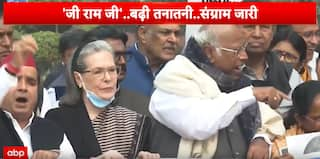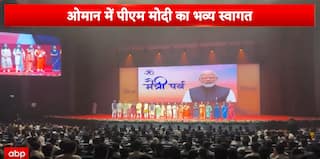Explorer
RBI cuts key lending rate by 25 basis points

Mumbai: India's central bank on Tuesday cut its key lending rate by 25 basis points (bps) in line with overall expectations, comforted by the central government's fiscal prudence steps, a cut in interest rates on small savings rates and moderate inflation. The repurchase rate, or the short-term lending rate for commercial banks on loans taken from the central bank (Reserve Bank of India), stands lowered to 6.5 percent from 6.75 percent. The reverse repurchase rate, or the short-term borrowing rate, has been adjusted upward to 6 percent from 5.75 percent. The changes were carried out in the monetary policy for the current fiscal announced by Reserve Bank of India (RBI) Governor Raghuram Rajan here on Tuesday. Among the two key instruments to directly regulate the money flow in the system, the cash reserve ratio (CRR), which is the quantum of liquid funds against deposits which commercial banks have to hold, has been left unchanged at 4 percent. But the minimum daily maintenance of CRR has been cut to 90 percent from 95 percent. Similarly, the statutory liquidity ratio, or the value of specified securities which commercial banks have to subscribe to, stands at 21.25 percent, effective from April 2. The central bank had last cut its short-term lending rate in September by 50 basis points to 6.75 percent. Cumulatively, 2015 saw the monetary authority cut the repo rate by 1.25 percent. "Inflation has evolved along the projected trajectory and the target set for January 2016 was met with a marginal undershoot," Rajan said in his policy statement, adding that retail inflation was expected to decelerate modestly and remain around 5 percent in this fiscal. "After two consecutive years of deficient monsoon, a normal monsoon would work as a favourable supply shock, strengthening rural demand and augmenting the supply of farm products that also influence inflation," he said. "On the other hand, the fading impact of lower input costs on value addition in manufacturing, persisting corporate sector stress and risk aversion in the banking system, and the weaker global growth and trade outlook could impart a downside to growth outcomes going forward," he said. He said the growth projection for 2016-17 was being retained at 7.6 percent. The RBI governor declared that the stance of monetary policy will remain accommodative. "The Reserve Bank will continue to watch macroeconomic and financial developments in the months ahead with a view to responding with further policy action as space opens up," he said, adding it was more important at this juncture to ensure that all the rate cuts made since last year transmit to lending rates. "The reduction in small savings rates announced in March 2016, the substantial refinements in the liquidity management framework announced in this policy review and the introduction of the marginal cost of funds based lending rate (MCLR) should improve transmission and magnify the effects of the current policy rate cut," Rajan said. Declaring that the Reserve Bank's first objective of meeting short term liquidity needs has been accomplished through provision of liquidity by its regular facilities, the governor said the RBI plans to meet its other objective "to supply durable liquidity in the economy so as to facilitate growth while ensuring that the monetary policy stance is supported" through a new mechanism. The RBI aims to supply durable liquidity "by modulating net foreign assets (NFA) and net domestic assets (NDA) growth over the course of the year, broadly consistent with the demand for liquid assets to meet transaction needs of the economy," Rajan said. "This will ensure adequate availability of durable liquidity, regardless of short term seasonal and frictional fluctuations," he added. The Indian industry welcomed Rajan's latest easing in monetary policy. The Confederation of Indian Industry (CII) said the 25 bps cut signals that the central bank was continuing to maintain an accommodative stance. "Besides, for the first time, the RBI has narrowed the policy rate corridor by increasing the reverse repo rate by 25 bps. This along with measures to improve liquidity in the system would enable better monetary policy transmission and improve the availability and cost of credit to industry," CII director general Chandrajit Banerjee said in a statement here. "The move would stimulate demand, augment buying of consumer durables' vis-a-vis reduced costs of credit, boost investments and growth of manufacturing sector," said PHD Chamber president Mahesh Gupta.
Follow Breaking News on ABP Live for more latest stories and trending topics. Watch breaking news and top headlines online on ABP News LIVE TV
Read more

Sayantan Ghosh
Opinion





































